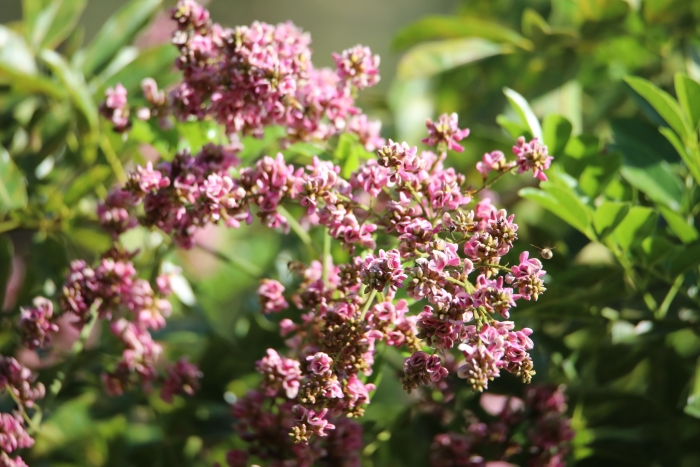Cabbage Bark
(Andira inermis)
Cabbage Bark (Andira inermis)
/
/

Aitor
CC BY 4.0
Image By:
Aitor
Recorded By:
Copyright:
CC BY 4.0
Copyright Notice:
Photo by: Aitor | License Type: CC BY 4.0 | License URL: http://creativecommons.org/licenses/by/4.0/ | Rights Holder: Aitor | Publisher: iNaturalist | Date Created: 2021-03-22T12:31:05Z |

























Estimated Native Range
Summary
Andira inermis, commonly known as cabbage bark or river almond, is a deciduous tree native to the rainforests and seasonally dry forests of Central and South America, from southern Mexico to South America, as well as Western Africa. It has also been introduced to the Caribbean, Florida, and Africa. This species can grow up to 115 feet tall and is characterized by its dense, dark green foliage and rough, thick bark that resembles cabbage, hence the common name. The tree produces purple or pink flowers during the spring, which are followed by large, edible seeds encased in pods. The flowers are not particularly showy, but they do attract pollinators such as bees.
Cabbage bark trees are valued for their hard, durable wood and are often used in reforestation projects and for timber. They are also planted as shade trees in coffee and cocoa plantations. In cultivation, they require full sun to partial shade, well-drained soils, and can tolerate drought once established. While Andira inermis is not commonly grown in ornamental horticulture, it can be used in large landscapes and parks. Gardeners should be cautious, as it is potentially invasive in some non-native regions. Before planting, it is essential to check local regulations and invasive species lists.CC BY-SA 4.0
Cabbage bark trees are valued for their hard, durable wood and are often used in reforestation projects and for timber. They are also planted as shade trees in coffee and cocoa plantations. In cultivation, they require full sun to partial shade, well-drained soils, and can tolerate drought once established. While Andira inermis is not commonly grown in ornamental horticulture, it can be used in large landscapes and parks. Gardeners should be cautious, as it is potentially invasive in some non-native regions. Before planting, it is essential to check local regulations and invasive species lists.CC BY-SA 4.0
Plant Description
- Plant Type: Tree
- Height: 33-82 feet
- Width: 20-30 feet
- Growth Rate: Rapid
- Flower Color: Pink, White
- Flowering Season: Spring, Summer
- Leaf Retention: Evergreen
Growth Requirements
- Sun: Full Sun, Part Shade
- Water: Medium
- Drainage: Fast, Medium
Common Uses
Erosion Control, Low Maintenance
Natural Habitat
native to the rainforests and seasonally dry forests of Central and South America, from southern Mexico to South America, as well as Western Africa
Other Names
Common Names: Partridge Wood, Worm Bark, Andira-Uchi, Angelim, Angelim-Branco, Angelim-Da-Várzea, Angelim-Liso, Cabbage Bark
Scientific Names: , Andira inermis, Andira jamaicensis, Andira racemosa, Geoffraea jamaicensis, Geoffrea inermis, Geoffroea acutifolia, Geoffroea inermis, Geoffroea inermis, Geoffroea jamaicensis
GBIF Accepted Name: